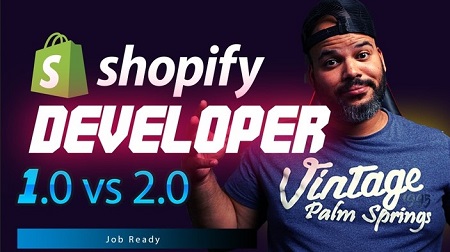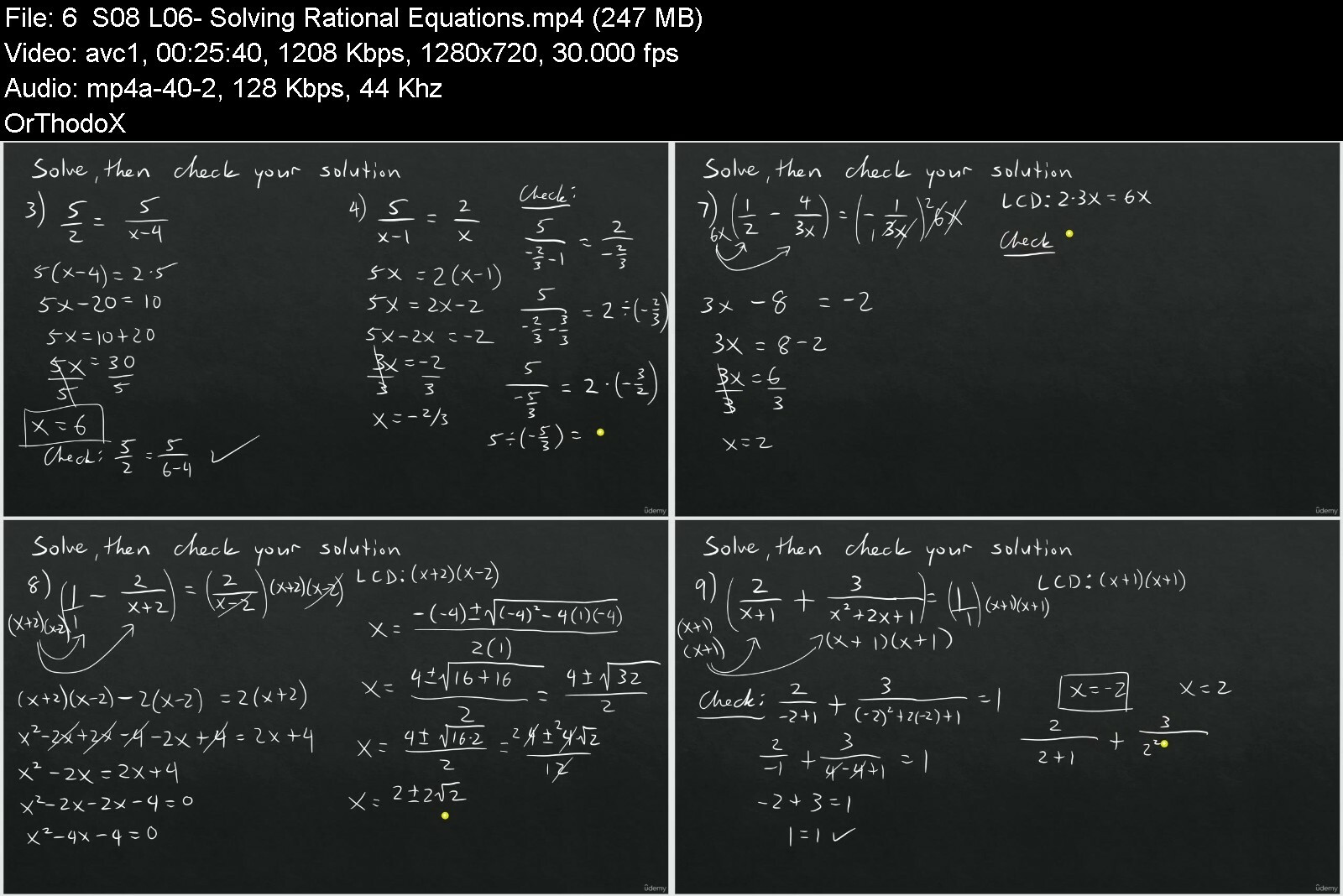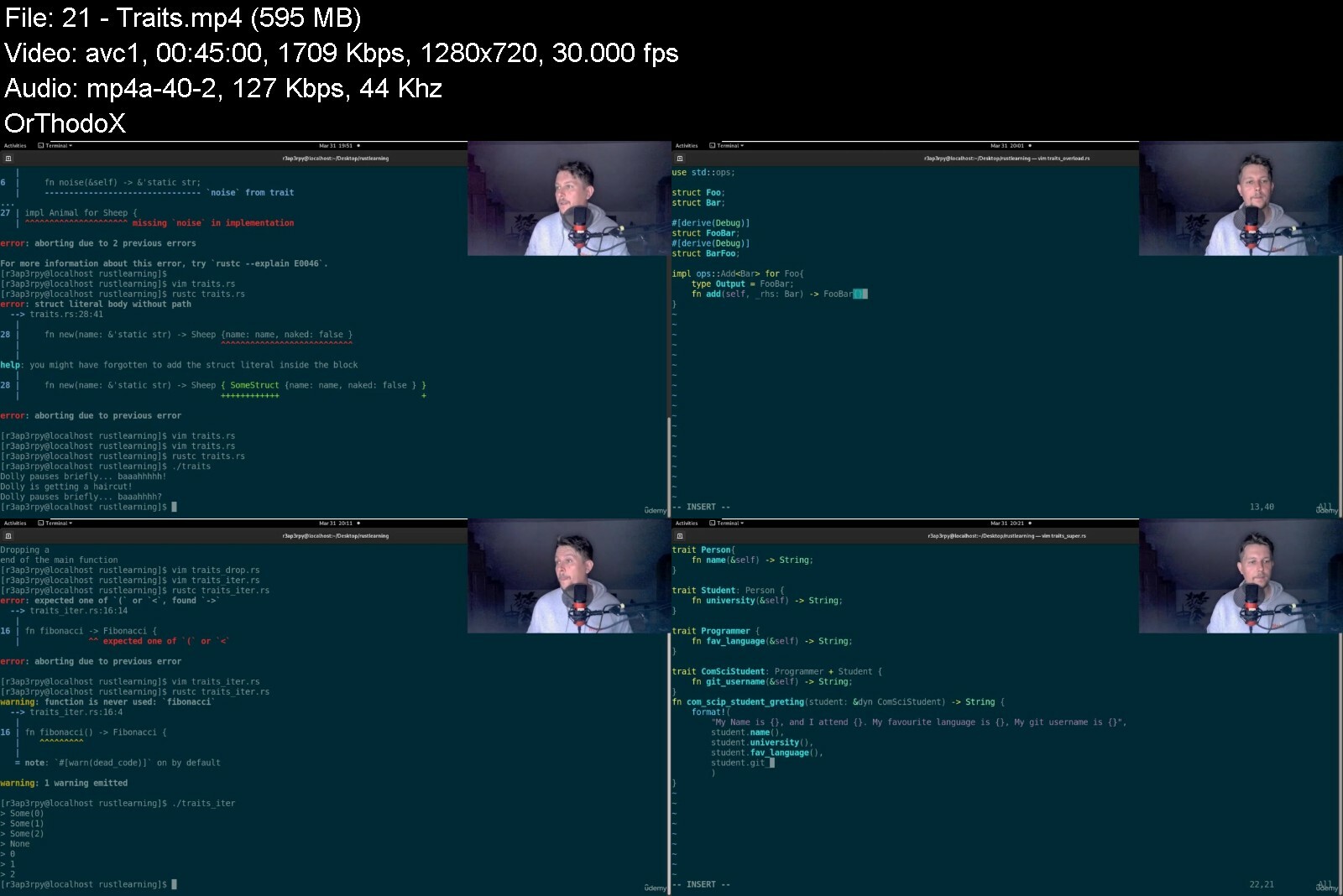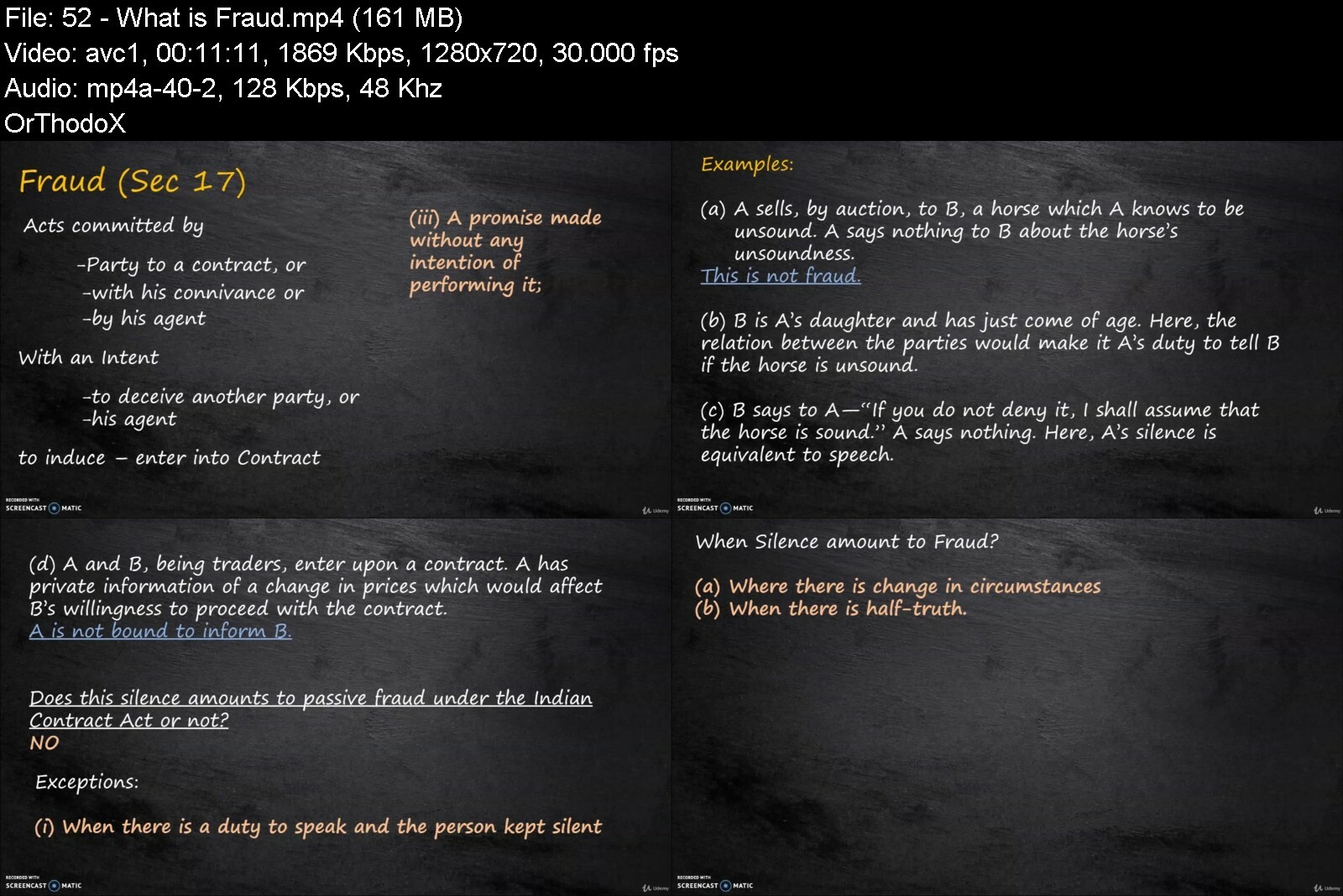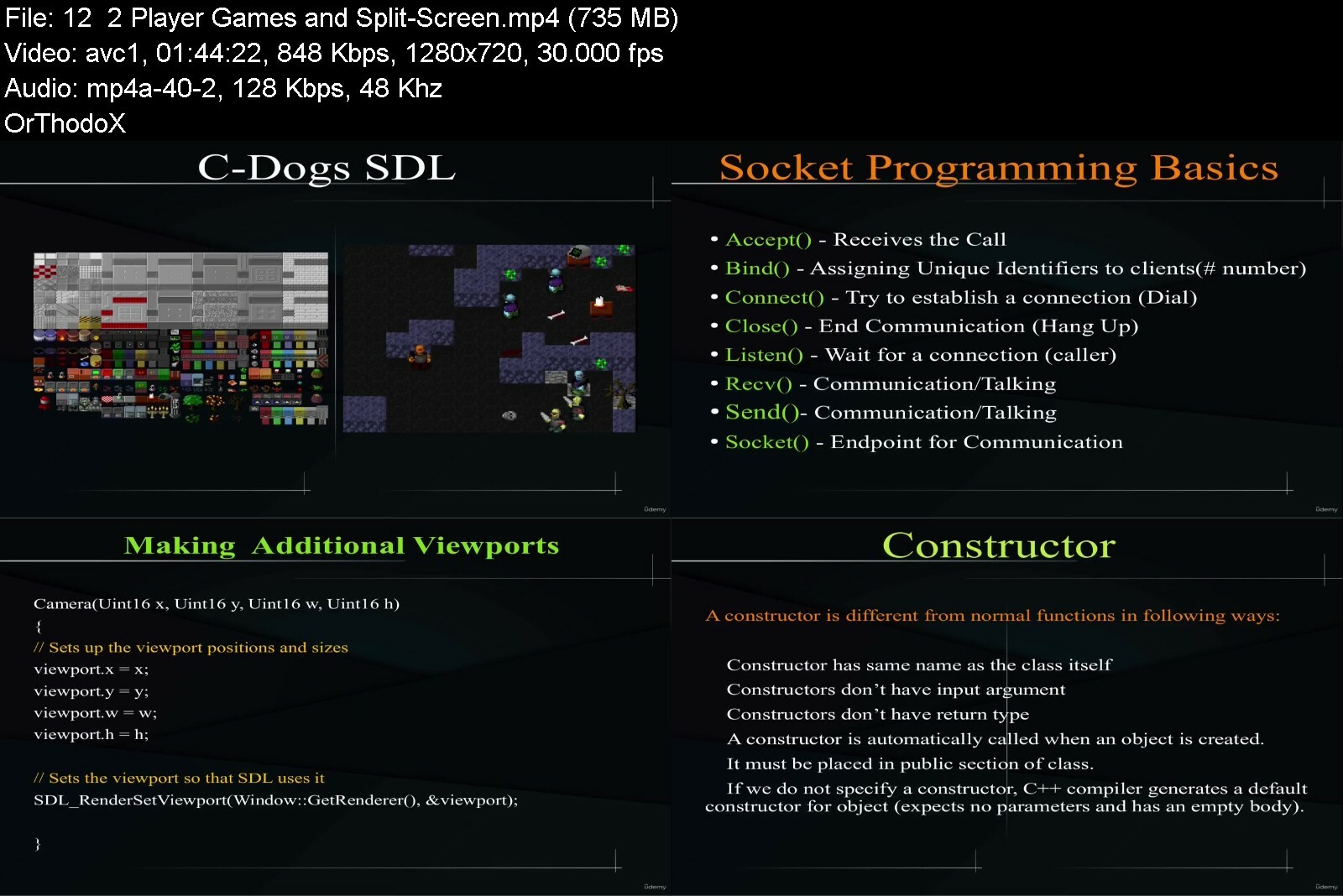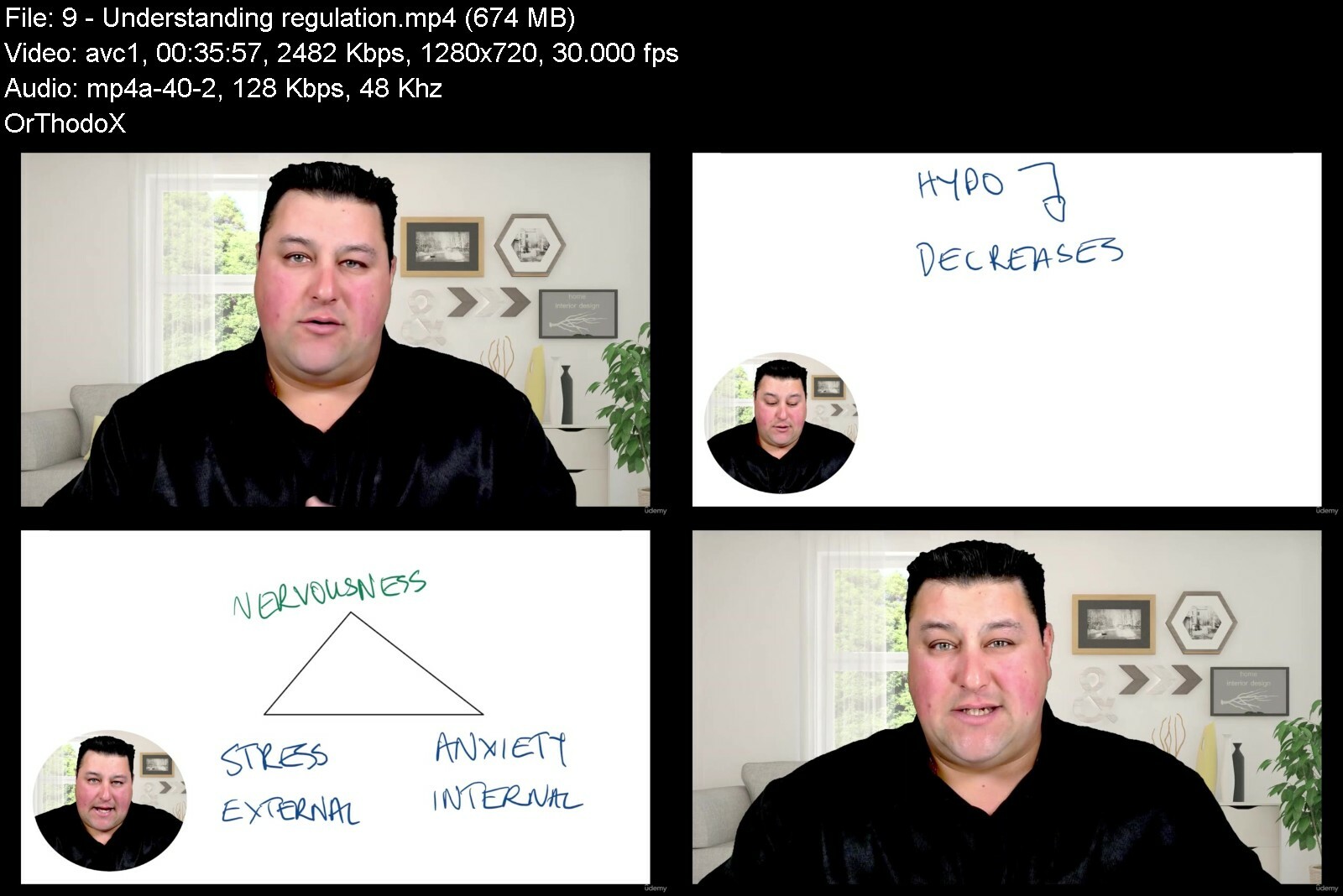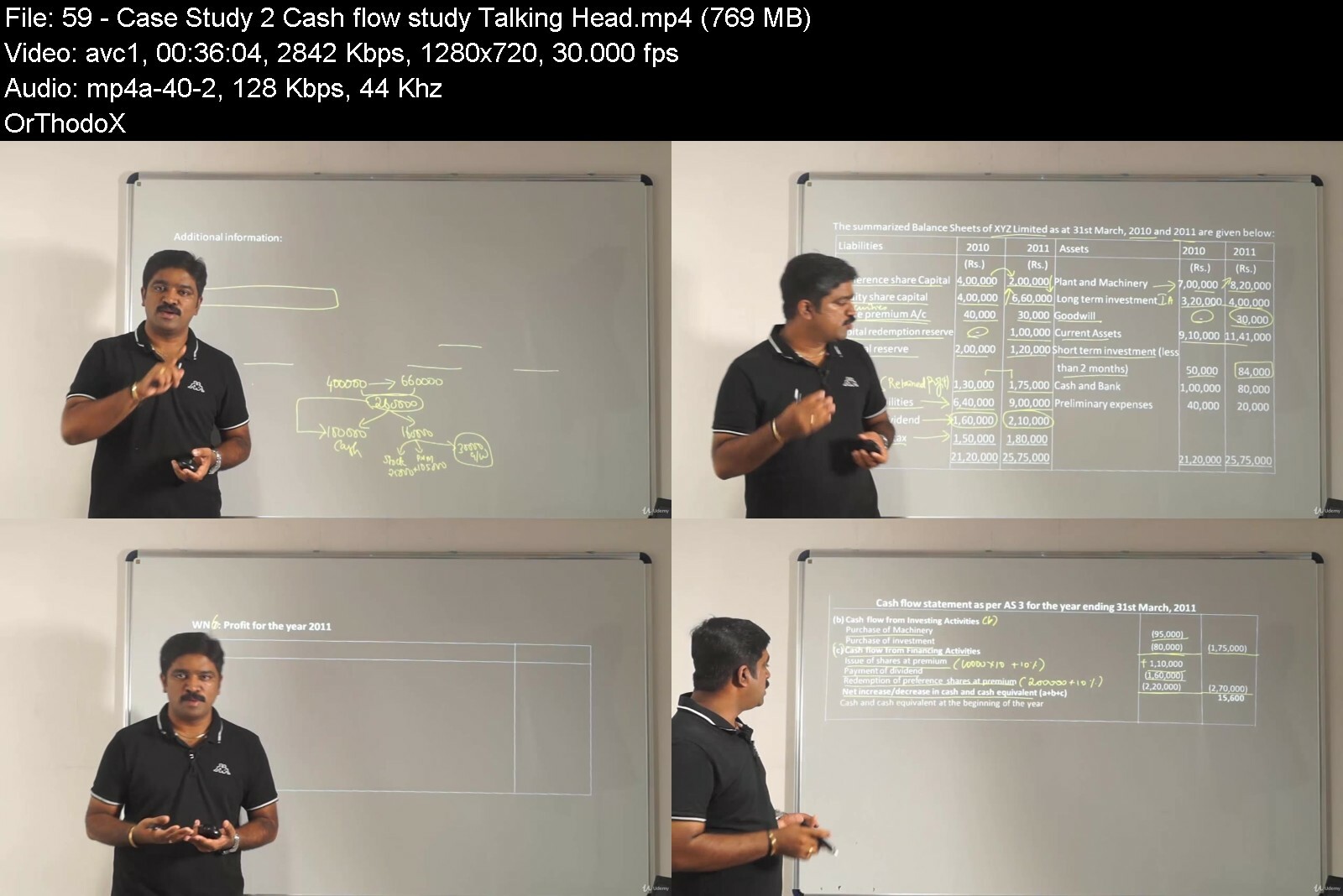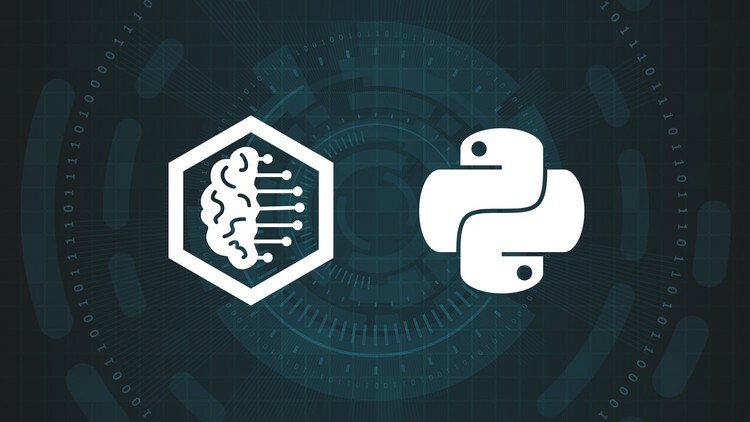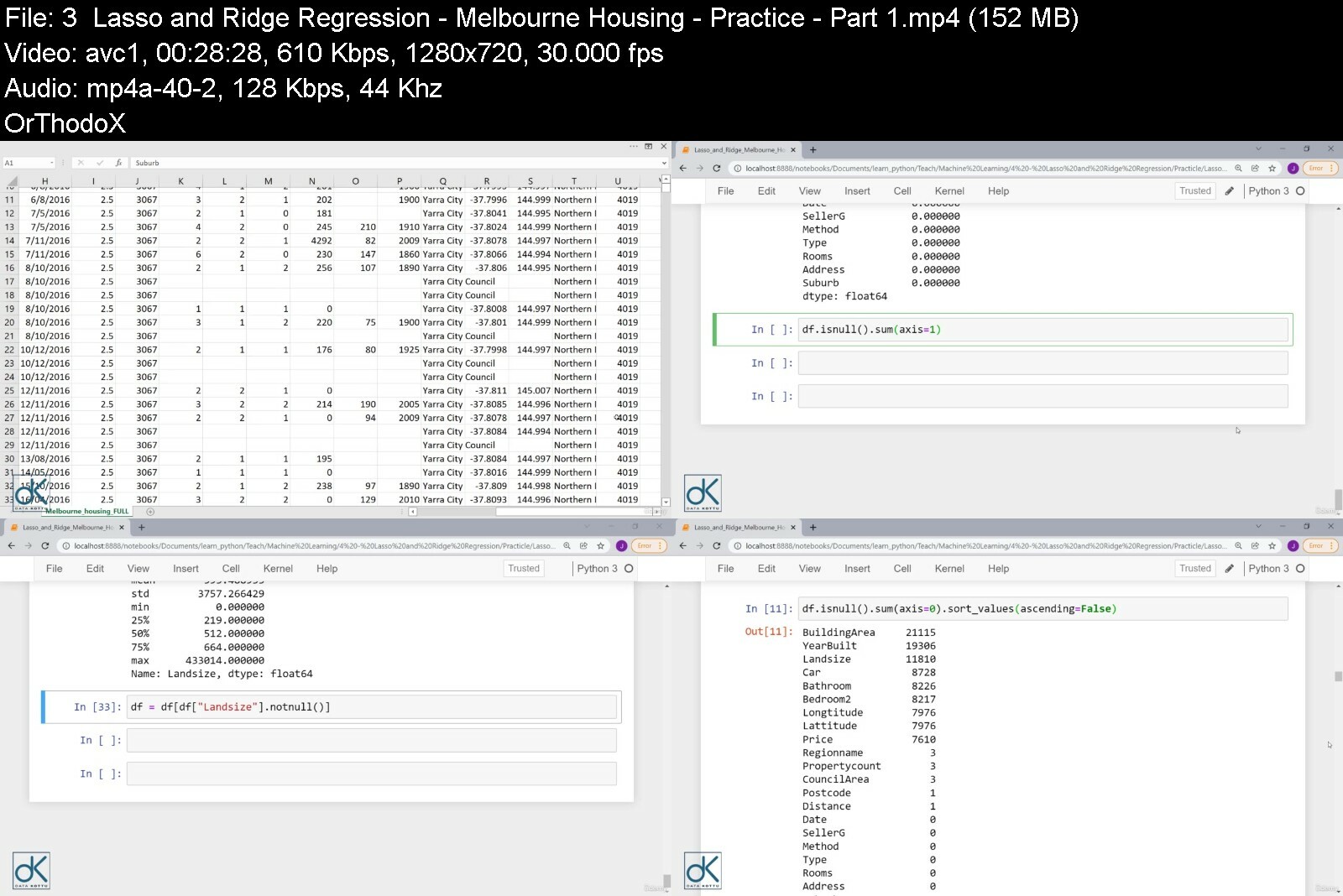Badass Black Friday Bundle by Chris Orzechowski

Chris Orzechowski - Badass Black Friday Bundle | 1.14 GBWelcome to Badass Black Friday Bundle
Get Six Of My Most Powerful Black Friday / Cyber Monday Email Marketing Courses
Let me flash the trophy case real quick so we can get past the credential-building and get to the good stuff.
What you can learn from Chris Orzechowski Badass Black Friday Bundle?
Course #1 - Black Friday Bootcamp
This is a short course I created for one of my e-commerce coaching groups. It outlines the high level strategy you need to use to MAXIMIZE sales for BFCM.
I go over everything from how to map out your promo calendar. what emails to send when. exactly when you should START and FINISH your promo(s). and, most importantly.
. how to STAND OUT and grab attention in an overcrowded inbox, so you can break every sales record.
Once you watch this mini-course, you're going to be pumping out high-converting BFCM campaigns in no time!
Course #2 - Make It Rain Monthly - BFCM/Q4 Planning Call
This is a special "members-only" coaching call I recorded with a handful of my top students to help them prepare their clients' brands for BFCM success.
I even critique (and edit) a few of my students' BFCM emails during this call.
You can look over my shoulder and see how I think about constructing these email campaigns and sequences - super valuable!
Course #3 - Make It Rain Monthly Issue #8 - The Black Friday / Cyber Monday - MEGA Issue Part 1
- My "A-Z" roadmap for creating highly profitable Cyber Week email marketing campaigns.
- The FIRST email you should send in the month of November, to increase the sales you make from every email you send for the next six weeks (I actually wrote this email for you. You can swipe it verbatim.
- Just swap in some small details about your business, hit send, and watch the sales start rolling in.)
- How to map out a three-month promotional calendar in less than 60 minutes. (Plus, how to come up with the topics to send, on which days, to the right subscribers.)
- What to do (instead of just giving a discount or giving a bonus) that'll incite a buying frenzy, generate word of mouth buzz, create raving fans, AND could possibly lead to record-breaking sales.
- A breakdown of a collection of BFCM emails, including some from a sequence that brought in six-figures in one week flat.
Course #4 - Make It Rain Monthly Issue #9 - The Black Friday / Cyber Monday - MEGA Issue Part 2
- The "Magic Box" Method I used to free up 25 hours of creative time on my calendar, so I could get more work done in less time, with less stress. and more time to myself.
- The biggest mistake I made as I began growing my team. and how I fixed it so everyone could perform at a higher, more autonomous level.
- How to finally get clear on what you want in life. and how to go get it.
- Why trying to be a 'cool boss' might hurt your team more than help it.
- One psychological insight that'll make selling to 'people with money' 10x easier. This works especially well if you're selling a high-end product/high-ticket service.
- One software that can cut your weekly call volume down by 70% (or more).
- The "AC" email promotion that'll send your Black Friday/Cyber Monday sales through the roof.
- How to scoop up TONS of sales from people who didn't buy from your BF/CM campaign.
- Why giving a discount might actually HURT your sales and turn off a large percentage of your customers.
- When to use a discount vs other types of offers in your emails (they both work and can both be used strategically. but you've gotta do this right.)
- How to instantly induce an "I've gotta spend money with this brand" feeling in your customers. even if they weren't planning on buying anything five minutes before seeing your email.
- A breakdown of a six-figure BF/CM email campaign (meaning: we actually ran this for one of my e-commerce clients and generated six-figures in sales with it).
- A two-word subject line you can use on Black Friday to stick out like a sore thumb and get your subscribers' attention. even when everyone else is screaming about their sales.
- The one type of campaign you should run if you feel like offering discounts 'cheapens' your brand.
- How to adapt this campaign for OTHER holidays throughout the year (like Mother's Day & Father's Day). I even riffed off a quick email hook you can keep in your back pocket until spring.
Course #5 - Make It Rain Monthly Issue #20 - The Black Friday / Cyber Monday - 2021 Gameplan
- The SMS Sign Up Sequence that helped us grow an SMS list by 1,000+ subscribers while generating $10,000+ in sales.
- How to make a TON of sales on Thanksgiving. without pissing off everyone on your list. (In fact, people will be giddy with anticipation if you do this promo right.)
- A psychological trigger you can use in your copy that makes your customers go crazy for your products.
- Why BFCM21 is going to look very different than years past. and the changes you should make to your strategy to stand out in the inbox (and make a ton of sales).
- How the smartest marketers and brand owners are adapting to iOS14 and iOS15 (and the big shift you need to make to thrive).
- Will SMS marketing replace or kill email? My surprising answer on page 3.
- How to dramatically increase your EHR (effective hourly rate). so you can increase profits while working less.
- Insights from an SMS campaign I ran back in 2017 that worked incredibly well. and got people asking us to send them MORE texts (it's a cool approach you can adapt for your own brand).
- How to write headlines and subject lines that trigger INSTANT curiosity. that suck your prospects in and DEMAND attention. (Try this with your landing pages and advertorial pages and watch your click-thrus SKYROCKET)
- The #1 copy mistake I see most copywriters and brand owners make with ALL of their emails, landing pages, ads, video scripts, and more.
- Fix this one thing and you'll be amazed at how much better your copy reads and converts.
- How to get your customers to 'think past the sale' and get emotionally attached to your product. so they feel compelled to buy. (Sneaky. but powerful. And yes, totally ethical.)
- 6 SMS messages that 'primed the pump' for our sales pitches. while making our customers feel a rush of positive thoughts and emotions.
- The secret to writing tighter, pithier copy.
- 3 copy principles for high converting SMS messages.
- Two simple examples of an SMS list building campaign that you can whip up in a few minutes to start growing your list.
- The Ultimate "Trojan Horse" campaign to get your customers primed and ready to buy from you for BFCM.
- The Triple Threat BFCM campaign calendar you should try this Q4. (Could it triple your sales? Only one way to find out.)
- What almost EVERYONE gets wrong about Gary Vee's jab-jab-jab-right hook approach to marketing. and why it might be the smartest tactic to use come this Q4 (and beyond).
- 5 more SMS list building examples that can get you a TON of new subscribers while making lots of "easy sales" in the process.
- How to use email to 'scoop up' buckets of new buyers. even the people who DON'T buy from you.
- Are you scared of emailing too often? Check out the tip on page 22 that'll reduce your complaints and increase your sales.
- The four core campaigns EVERY brand should be running on a monthly basis. even if you're not in e-com. (I use this with my own list and it works incredibly well.)
Course #6 - Holiday Sale Super Sequence
Want to scoop up even MORE sales during the holidays (without the hassle of figuring out your promo calendar)?
This Holiday Sale Super Sequence is based on campaigns I still run for my agency clients that generate anywhere between $30-$50K - without fail.
Comes with SIX email templates, a quick-start implementation video and super secret bonus.
So if you want to generate massive sales easily every time there's a holiday. then this training is going to help you make that happen.
This sequence is PERFECT for BFCM. but you can even modify it to run other holiday sales throughout the year.
More info:

Chris Orzechowski - Badass Black Friday Bundle | 1.14 GB
Get Six Of My Most Powerful Black Friday / Cyber Monday Email Marketing Courses
Let me flash the trophy case real quick so we can get past the credential-building and get to the good stuff.
What you can learn from Chris Orzechowski Badass Black Friday Bundle?
Course #1 - Black Friday Bootcamp
This is a short course I created for one of my e-commerce coaching groups. It outlines the high level strategy you need to use to MAXIMIZE sales for BFCM.
I go over everything from how to map out your promo calendar. what emails to send when. exactly when you should START and FINISH your promo(s). and, most importantly.
. how to STAND OUT and grab attention in an overcrowded inbox, so you can break every sales record.
Once you watch this mini-course, you're going to be pumping out high-converting BFCM campaigns in no time!
Course #2 - Make It Rain Monthly - BFCM/Q4 Planning Call
This is a special "members-only" coaching call I recorded with a handful of my top students to help them prepare their clients' brands for BFCM success.
I even critique (and edit) a few of my students' BFCM emails during this call.
You can look over my shoulder and see how I think about constructing these email campaigns and sequences - super valuable!
Course #3 - Make It Rain Monthly Issue #8 - The Black Friday / Cyber Monday - MEGA Issue Part 1
- My "A-Z" roadmap for creating highly profitable Cyber Week email marketing campaigns.
- The FIRST email you should send in the month of November, to increase the sales you make from every email you send for the next six weeks (I actually wrote this email for you. You can swipe it verbatim.
- Just swap in some small details about your business, hit send, and watch the sales start rolling in.)
- How to map out a three-month promotional calendar in less than 60 minutes. (Plus, how to come up with the topics to send, on which days, to the right subscribers.)
- What to do (instead of just giving a discount or giving a bonus) that'll incite a buying frenzy, generate word of mouth buzz, create raving fans, AND could possibly lead to record-breaking sales.
- A breakdown of a collection of BFCM emails, including some from a sequence that brought in six-figures in one week flat.
Course #4 - Make It Rain Monthly Issue #9 - The Black Friday / Cyber Monday - MEGA Issue Part 2
- The "Magic Box" Method I used to free up 25 hours of creative time on my calendar, so I could get more work done in less time, with less stress. and more time to myself.
- The biggest mistake I made as I began growing my team. and how I fixed it so everyone could perform at a higher, more autonomous level.
- How to finally get clear on what you want in life. and how to go get it.
- Why trying to be a 'cool boss' might hurt your team more than help it.
- One psychological insight that'll make selling to 'people with money' 10x easier. This works especially well if you're selling a high-end product/high-ticket service.
- One software that can cut your weekly call volume down by 70% (or more).
- The "AC" email promotion that'll send your Black Friday/Cyber Monday sales through the roof.
- How to scoop up TONS of sales from people who didn't buy from your BF/CM campaign.
- Why giving a discount might actually HURT your sales and turn off a large percentage of your customers.
- When to use a discount vs other types of offers in your emails (they both work and can both be used strategically. but you've gotta do this right.)
- How to instantly induce an "I've gotta spend money with this brand" feeling in your customers. even if they weren't planning on buying anything five minutes before seeing your email.
- A breakdown of a six-figure BF/CM email campaign (meaning: we actually ran this for one of my e-commerce clients and generated six-figures in sales with it).
- A two-word subject line you can use on Black Friday to stick out like a sore thumb and get your subscribers' attention. even when everyone else is screaming about their sales.
- The one type of campaign you should run if you feel like offering discounts 'cheapens' your brand.
- How to adapt this campaign for OTHER holidays throughout the year (like Mother's Day & Father's Day). I even riffed off a quick email hook you can keep in your back pocket until spring.
Course #5 - Make It Rain Monthly Issue #20 - The Black Friday / Cyber Monday - 2021 Gameplan
- The SMS Sign Up Sequence that helped us grow an SMS list by 1,000+ subscribers while generating $10,000+ in sales.
- How to make a TON of sales on Thanksgiving. without pissing off everyone on your list. (In fact, people will be giddy with anticipation if you do this promo right.)
- A psychological trigger you can use in your copy that makes your customers go crazy for your products.
- Why BFCM21 is going to look very different than years past. and the changes you should make to your strategy to stand out in the inbox (and make a ton of sales).
- How the smartest marketers and brand owners are adapting to iOS14 and iOS15 (and the big shift you need to make to thrive).
- Will SMS marketing replace or kill email? My surprising answer on page 3.
- How to dramatically increase your EHR (effective hourly rate). so you can increase profits while working less.
- Insights from an SMS campaign I ran back in 2017 that worked incredibly well. and got people asking us to send them MORE texts (it's a cool approach you can adapt for your own brand).
- How to write headlines and subject lines that trigger INSTANT curiosity. that suck your prospects in and DEMAND attention. (Try this with your landing pages and advertorial pages and watch your click-thrus SKYROCKET)
- The #1 copy mistake I see most copywriters and brand owners make with ALL of their emails, landing pages, ads, video scripts, and more.
- Fix this one thing and you'll be amazed at how much better your copy reads and converts.
- How to get your customers to 'think past the sale' and get emotionally attached to your product. so they feel compelled to buy. (Sneaky. but powerful. And yes, totally ethical.)
- 6 SMS messages that 'primed the pump' for our sales pitches. while making our customers feel a rush of positive thoughts and emotions.
- The secret to writing tighter, pithier copy.
- 3 copy principles for high converting SMS messages.
- Two simple examples of an SMS list building campaign that you can whip up in a few minutes to start growing your list.
- The Ultimate "Trojan Horse" campaign to get your customers primed and ready to buy from you for BFCM.
- The Triple Threat BFCM campaign calendar you should try this Q4. (Could it triple your sales? Only one way to find out.)
- What almost EVERYONE gets wrong about Gary Vee's jab-jab-jab-right hook approach to marketing. and why it might be the smartest tactic to use come this Q4 (and beyond).
- 5 more SMS list building examples that can get you a TON of new subscribers while making lots of "easy sales" in the process.
- How to use email to 'scoop up' buckets of new buyers. even the people who DON'T buy from you.
- Are you scared of emailing too often? Check out the tip on page 22 that'll reduce your complaints and increase your sales.
- The four core campaigns EVERY brand should be running on a monthly basis. even if you're not in e-com. (I use this with my own list and it works incredibly well.)
Course #6 - Holiday Sale Super Sequence
Want to scoop up even MORE sales during the holidays (without the hassle of figuring out your promo calendar)?
This Holiday Sale Super Sequence is based on campaigns I still run for my agency clients that generate anywhere between $30-$50K - without fail.
Comes with SIX email templates, a quick-start implementation video and super secret bonus.
So if you want to generate massive sales easily every time there's a holiday. then this training is going to help you make that happen.
This sequence is PERFECT for BFCM. but you can even modify it to run other holiday sales throughout the year.
More info:
Screenshots

Link Download
Extract files with WinRar 5 or Latest !
Link Download







